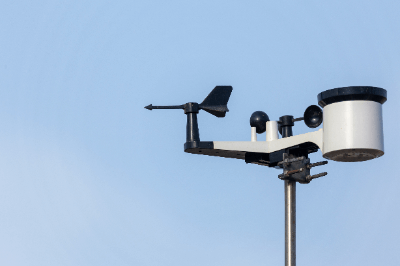What Is a Rain Gauge?

Rain gauges measure precipitation, including rain, snow, and hail. They capture precipitation through a collection funnel and measure the amount internally.
Uses of Rain Gauges
Rain gauges serve several purposes.
1. Disaster Prevention
Local authorities use rain gauges for flood prevention, landslide mitigation, and minimizing damage. These devices are crucial in regions prone to significant precipitation, like upstream or mountainous areas, as they help predict downstream impacts and facilitate early warning systems and preventive actions.
2. Agriculture
In agriculture, rain gauges assist in determining the optimal timing for pesticide application and irrigation. Accurate precipitation measurements guide decisions about the necessity and amount of irrigation post-rainfall, aiding in the prevention of overwatering and disease.
Features of Rain Gauges
Advantages
Modern rain gauges, especially automatic ones, provide an efficient and precise method to track rainfall. This capability is crucial in managing the increased instances of heavy rainfall and related events.
Disadvantages
Challenges with rain gauges include inaccuracies in cold regions due to freezing or snow cover, and strong winds causing measurement errors. Solutions include installing heating elements, windbreak fences, and laying artificial turf beneath the gauges to prevent inaccuracies from rainwater bounce.
Types of Rain Gauges
1. Tipping Bucket Rain Gauge
These automatic gauges features a seesaw-like container that tips when filled with a set amount of precipitation, sending an electrical signal for each tip. Ideal for unmanned observation, they’re widely used by meteorological agencies.
2. Storage Rain Gauge
These manual gauges collect precipitation in a storage bin, where it’s visually measured using a measuring cup. Suitable for places without electricity, they require continuous manned observation due to limitations like storage capacity and evaporation risk.
Choosing a Rain Gauge
Selection depends on environmental conditions and electricity availability. Tipping bucket gauges are recommended for areas with electricity for their automatic, accurate measurements. In places without electricity, the manual storage rain gauge is suitable, albeit with lower accuracy.